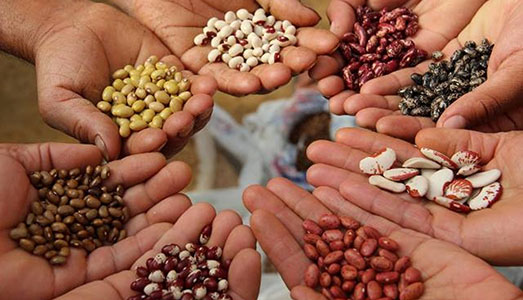— by Sally Buchanan —
The month of March is tricky. Apparently it always has been. Weather records from centuries past report its fickleness. It is the month of the spring equinox in the northern hemisphere when weather is always unpredictable: wind, rain, snow, heat, freezes, tornadoes, floods, high tides, drought and all over again. In farming communities questions arise daily in March about whether it is too wet to plow or too cold to plant. Early European manuscripts picture the importance of March to people and give us a wonderful look into the agriculture and rituals of medieval times. Exquisite drawings portray daily life of ordinary folks plowing and planting while trees bloom and small animals romp around the edges of the pages.
Interestingly, in modern times in the northern hemisphere, the meteorological first day of spring is March 1 but the astronomical first day of spring is March 20 or 21. In many early cultures March was the first month of the new year because it was the spring equinox and the beginning of returning life. In the Roman calendar the month was named Martius after the god of war. But earlier he was the god of agriculture and fertility when the leafing out of trees, of drying out, of warming up and of the planting season arrived
In the mid-20th Century this writer’s Grandmother had a decades-long competition with a neighbor, a retired farmer, about who would harvest spring peas first. The critical decision was when to plant and that depended upon the difficult March weather on the prairies of Illinois. They both liked a date hovering around March 15. Seems way too early to plant anything there but they had to take into consideration when the first fierce heat, usually in May, might hit those plants and shrivel them up. The rule was that you had to harvest and display at least three pods of viable shelling peas to claim yourself the winner. The score was close until Mr. Hoblit died unexpectedly one winter at age 94. Grandma said he couldn’t stand the fact that she was going to win for the third year in a row.
The expression about March, “In like a lion, out like a lamb,” has been documented in print since the 17th Century and was probably used orally for centuries before that. Over the years a lot of weather keepers have insisted that it is not a bad predictor, but March is the great trickster especially when the equinox comes into play. Weather around March 20-21 is often wild and crazy.
Recently an island child at the library was requesting help to find a book about “the Ides of March when Julius Caesar was murdered.” There are a number of expressions related to March that are still being used besides the “Ides,” a word in the Roman calendar referring to the middle of the month, March 15. “Madder than a March hare” comes to mind probably referring to the crazy behavior of the European hare during breeding season in March or “Plant early in March, regret later in May.” Another, “A dry March and a wet May fill the barns with corn and hay.” March noses its way in to a lot of these sayings.
March may not have more notable historical events than other months, but there are a number that are worth remembering for those who like history aside from the assassination of Julius Caesar. In March 1360 when Edward III of England was in France plundering and raiding, the French in turn sailed over and raided and pillaged southern England for the first time. Edward and the English were outraged. The French were elated. Czar Nicholas abdicated his throne in March 1917 thereby setting off events that still affect modern history. In March 1939 Hitler occupied Czechoslovakia that received help from no one because many thought it not important enough to care.
Weatherwise, the most extreme tornado in U.S. history flattened parts of three states – Missouri, Illinois and Indiana on March 18, 1925. The great plains of the U.S. were hit in March 1941 with a record deadly blizzard that killed hundreds of people and thousands of animals. While in March 1952 a record rainfall in twenty four hours deluged islands in the Indian Ocean drowning hundreds in the resulting 73.62 inches. The greatest earthquake ever recorded in Japan destroyed a nuclear power plant and drowned thousands in March 2011. In March 2016 Puget Sound has had record rainfall while temperatures in the Eastern U.S. have attained new highs for March.
On Orcas Island there are lambs and calves in the fields. But there is also water standing in the farmland and trees downed by strong winds. The Crescent Beach road needed digging out due to high winds and water. A neighbor’s new bocce court was washed out by the same winds and high tides. A friend’s weather records note the highest rainfall at White Beach since she started keeping track in the 1950s.
Easter is in March this year since it always falls on the first Sunday after a full moon after the equinox. Passover escaped March and comes this year later in April, a time of more benign weather. The only facts you can count on in March and its weather are that for time immemorial it was been the month of the unpredictable.
“A dry March and April showers always bring to us May flowers.”
A folk saying from the Middle Ages.
**If you are reading theOrcasonian for free, thank your fellow islanders. If you would like to support theOrcasonian CLICK HERE to set your modestly-priced, voluntary subscription. Otherwise, no worries; we’re happy to share with you.**







